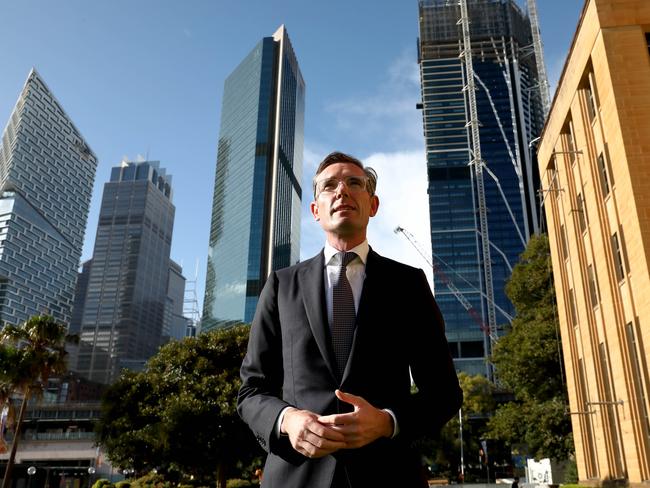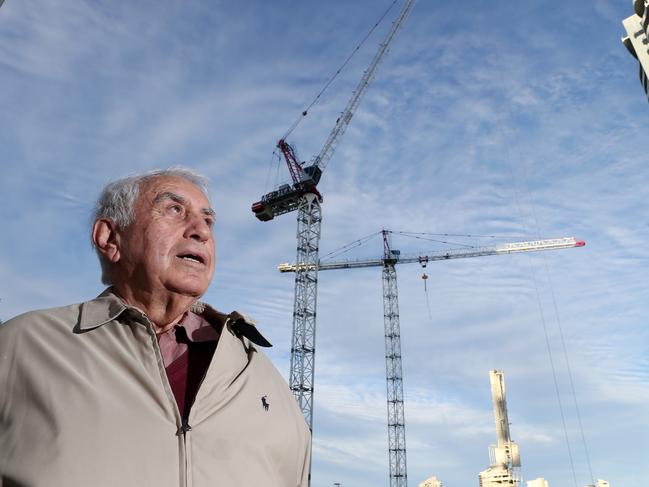Sydney remains a ghost town as the state’s vanishing public servants stay home
They get “cushier conditions” and “better pay” but where are they? Questions are being asked about what’s happened to the state’s biggest workforce — public servants. Have your say.
NSW
Don't miss out on the headlines from NSW. Followed categories will be added to My News.
The grand plan to kickstart Sydney’s economy and get the state’s thousands of public servants back into their offices appears to have faltered with the state government confessing they have no idea how many have returned.
Four months ago Premier Dominic Perrottet declared at a specially convened summit that “bringing back workers to the city is a civic duty from which we will all derive benefit, socially and economically”.
But The Daily Telegraph has been told many of the state’s non-frontline public servants are still only required to attend one day a week in the office — with some even skipping that requirement.
Sydney’s central business district offices are still struggling to get back to normal – with occupancy rates levels at just 55 per cent of pre-pandemic levels.
But when this paper approached all the major government departments to find out how many have returned, we were met with a wall of silence.

The Department of Premier and Cabinet told us on behalf of all the agencies that there’s “no centrally held data available to capture public sector employees’ office and work from home practices, either at a department level or across the sector”.
“Different government departments put in place their own return-to-work policies according to what best suits and assists each department’s customers and stakeholders,” a spokesman said.
Sydney billionaire property magnate Harry Triguboff – one of the nation’s most well-known businessmen – says everyone’s back at work at his firm Meriton and that people who stay at home simply don’t produce as much.
“I’m not boasting, but I think the people are happy to come because they like to be in each other’s company,” Mr Triguboff said.
He says the sooner everyone gets back to work the better.
“When the virus appeared, we sent a lot of workers out of this country so, we already didn’t have enough people to work. And now if they want to work at home they can’t produce as much,” he said.

“To overcome this, I’m sure that many institutions today use a workforce outside of Australia.
“We want to use our own people. The sooner they all come back the better.”
Back in the early days of the pandemic, in October 2020, the NSW Government declared the NSW public service would “lead” the office return in a major boost to the Sydney economy.
The Premier declined to comment on the issue, referring questions back to the department.

Free market think tank the Institute of Public Affairs says the fact the Perrottet Government cannot say whether public servants are back in the office is a sign of either “dishonesty or staggering ineptitude”.
“In what other Australian workplace would it be acceptable for management to not know whether staff are physically present at work?” asks policy director Gideon Rozner.
“It’s not a secret that public sector workers tend to get better pay and cushier conditions than those in the private sector.
“Surely it’s not too much to ask for them to at least rock up to the office?”
But the Taxpayers Alliance communications director Ebony Graveur says circumstances have changed since the inception of a traditional CBD office and “many teams are more productive when they’re not chained to a desk”.
“Workplace flexibility can be a boon for productivity across certain industries and jobs but it’s hard to believe a thought has been given to results in NSW’s public sector if the number of remote employees is not even known.”
The state of NSW employs more than 430,000 people the largest in the Southern Hemisphere – with non-frontline public servants making up about 14 per cent or 49,825 full-time equivalent employees.





